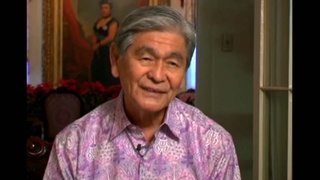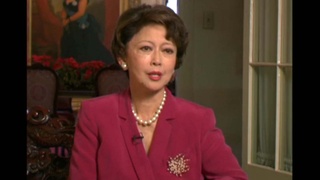Interviews
The Kona Island community
I think the difference came about not with my parents, but with their product, which are the children of my parents, and the children of Kona for example. Somewhat different from other communities because Kona is very independent, and the people there are very outspoken and they are generally supposed to be stubborn farmers and determined. Because the community was a predominant society, by that I mean we were predominantly Japanese. The Filipinos, Portuguese, Chinese were all minority. So we grew up in a dominant society of Japanese. And that’s why the people in Kona are different in the sense that they are confident, determined, and self-assured.
Date: May 29, 2006
Location: Hawai`i, US
Interviewer: Akemi Kikumura Yano
Contributed by: Watase Media Arts Center, Japanese American National Museum
Explore More Videos

Ethnic diversity
(b.1926) Democratic politician and three-term Governor of Hawai'i

Decision to run for governor
(b.1926) Democratic politician and three-term Governor of Hawai'i

Being fair
(b.1926) Democratic politician and three-term Governor of Hawai'i

Role of Hawaii internationally
(b.1926) Democratic politician and three-term Governor of Hawai'i



Christian gatherings in homes
(1926 - 2012) Scholar and professor of anthropology. Leader in the establishment of ethnic studies as an academic discipline

Not bringing shame to family
(1926 - 2012) Scholar and professor of anthropology. Leader in the establishment of ethnic studies as an academic discipline

Role of the Japanese American National Museum
(1926 - 2012) Scholar and professor of anthropology. Leader in the establishment of ethnic studies as an academic discipline

Going back to Hawaii
An expert researcher and scholar on Japanese immigrant clothing.

1920 labor strike
An expert researcher and scholar on Japanese immigrant clothing.

Bombing of Pearl Harbor
An expert researcher and scholar on Japanese immigrant clothing.

Helping soldiers
An expert researcher and scholar on Japanese immigrant clothing.

Image of Americans
Sansei from Hawaii living in Japan. Teacher and businesswoman.

Learning American cooking
(b.1909) Nisei from Washington. Incarcerated at Tule Lake and Minidoka during WWII. Resettled in Chicago after WWII
